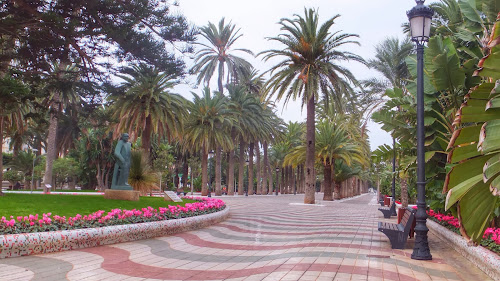Tapas and white wine. A welcome change from tajine but there is something unsettling about Melilla, one of Spain's two remaining "enclaves", surrounded by Moroccan territory.
The adjacent city of Nador and Melilla are worlds apart. The chaos, grime and poverty on the Moroccan side of the border gives way to pristine, elegant streets full of tapas bars and the Modernist/Art Deco architecture of Enrique Nieto, a student of Antonio Gaudi. Nieto continued designing in the modernist style, even after Modernism went out of fashion elsewhere. Accordingly, Melilla has the second most important concentration of Modernist works in Spain after Barcelona.
On the day we explored the old, fortress town we witnessed the apprehension of "illegal migrants" attempting to penetrate the heavily guarded borders of the enclave. There were Guardia Civil everywhere, helicopters buzzing overhead, police on motocross bikes zooming up and down the narrow, cobbled lanes of the old town in search of intruders.
There is considerable pressure by African refugees to enter Melilla which of course is part of the European Union. The border is secured by the Melilla border fence, a six-metre-tall double fence with watch towers, trip wires, infra red and CCTV and massive numbers of border patrol police. Refugees frequently manage to cross it illegally, avoiding the attempts by Spanish police to take them back to their home countries
...Mellila's elegant Central Park
...at the foot of Melilla's heavily restored, 15th century fortress.










No comments:
Post a Comment